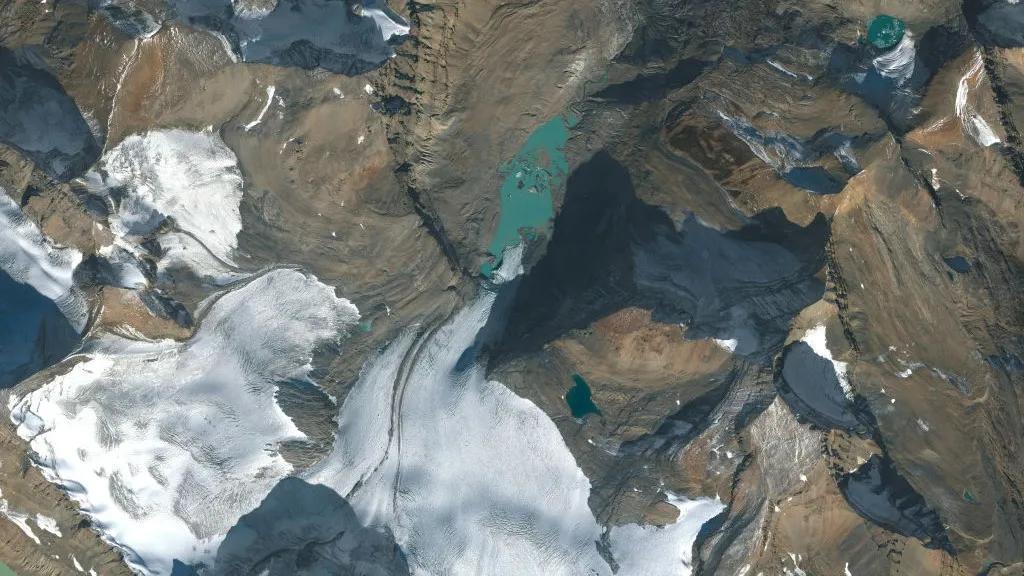
North America & Europe’s Glaciers Lost Unprecedented Ice in 4 Years: Study
Globally, the impact of climate change on glaciers has been a pressing concern in recent years. A new study has shed light on the alarming rate at which glaciers in North America and Europe are losing ice. According to the research, glaciers in Washington, Montana, British Columbia, Alberta, and the Swiss Alps experienced “unprecedented” ice loss between 2021 and 2024, with the rate of melting more than double what was recorded from 2010 to 2020.
The study, published in the journal Geophysical Research Letters, analyzed data from 2021 to 2024 and found that the combined glaciers in the mentioned regions lost a staggering 24.5 billion tons of ice annually on average. In comparison, Swiss Alps glaciers lost approximately 1.7 billion tons of ice each year during the same period.
What’s even more concerning is that the total ice loss by these glaciers has reached up to 13% over the four-year period. This not only highlights the severity of climate change but also underscores the urgent need for immediate action to mitigate its effects.
Lead author Dr. Mark Williams, a glaciologist at the University of Montana, explained the significance of the findings: “The rate of glacier loss is accelerating, and it’s happening fast. We’re seeing a loss of ice that’s unprecedented in the recent geological past.”
The study’s findings are based on a combination of satellite imagery, aerial photography, and field measurements. Researchers used a technique called “vertical structure analysis” to calculate the changes in glacier thickness and volume. This allowed them to determine the extent of ice loss and its impact on the overall mass of the glaciers.
The researchers also analyzed data from 2010 to 2020, which showed a more moderate rate of glacier loss. However, the accelerated rate of melting in the following years is a clear indication of the increased impact of climate change.
The study’s results are particularly concerning given the importance of glaciers in regulating global sea levels and providing freshwater to communities downstream. As glaciers melt, they contribute to sea level rise, which can have devastating consequences for coastal cities and ecosystems.
The findings also have significant implications for the environment and human populations. Glaciers play a crucial role in shaping local ecosystems, and their loss can have far-reaching consequences for biodiversity and ecosystem health.
In addition to the environmental concerns, the study highlights the importance of preserving glaciers for future generations. As the global average temperature continues to rise, the rate of glacier loss is likely to accelerate, leading to more severe consequences.
What can be done to mitigate the effects of climate change on glaciers? Firstly, reducing greenhouse gas emissions is crucial to slowing down the rate of global warming. This can be achieved through a transition to renewable energy sources, increasing energy efficiency, and adopting sustainable land-use practices.
Secondly, protecting and preserving glaciers requires a coordinated effort by governments, local communities, and international organizations. This can involve implementing measures to reduce pollution, promoting sustainable tourism, and supporting conservation efforts.
Thirdly, it’s essential to raise awareness about the importance of glaciers and the urgent need for action. By educating the public about the consequences of climate change and the importance of preserving glaciers, we can inspire individuals to make lifestyle changes and advocate for policy changes.
In conclusion, the study’s findings are a stark reminder of the devastating impact of climate change on glaciers in North America and Europe. The rapid rate of ice loss is a call to action, urging us to take immediate and collective action to mitigate the effects of climate change. As we move forward, it’s essential to prioritize the preservation of glaciers and the ecosystems they support, ensuring a sustainable future for generations to come.
Source: https://agupubs.onlinelibrary.wiley.com/doi/10.1029/2025GL115235






